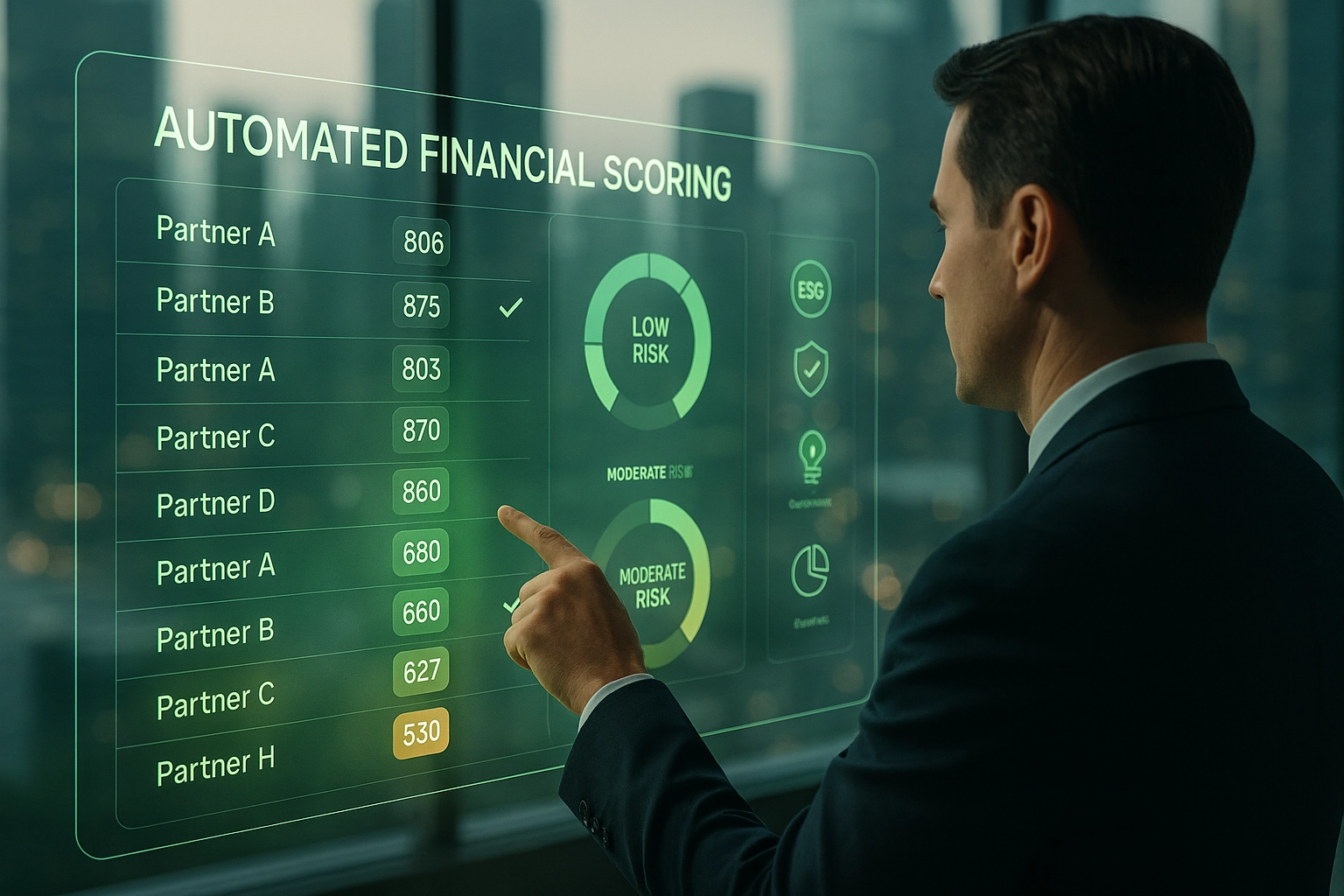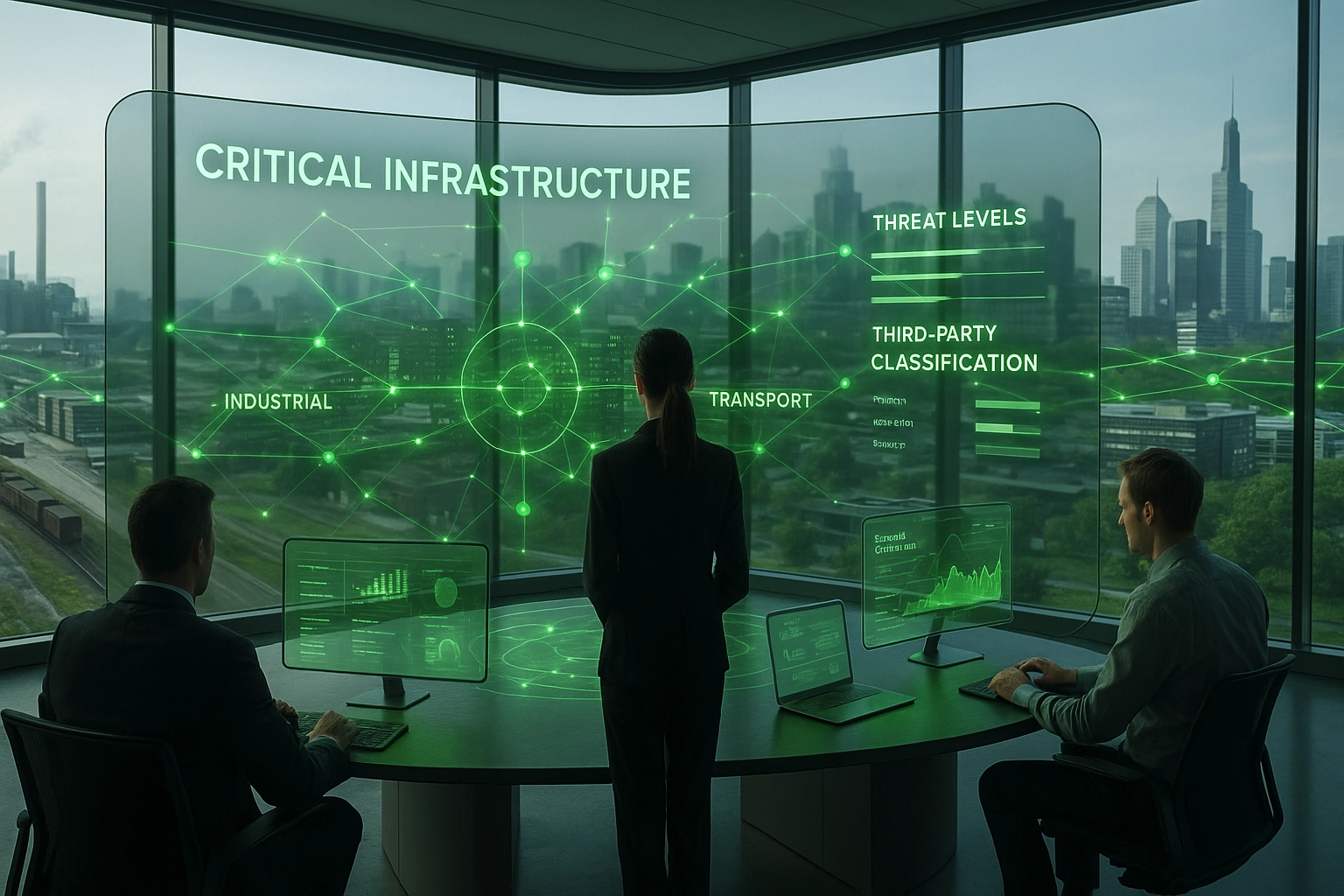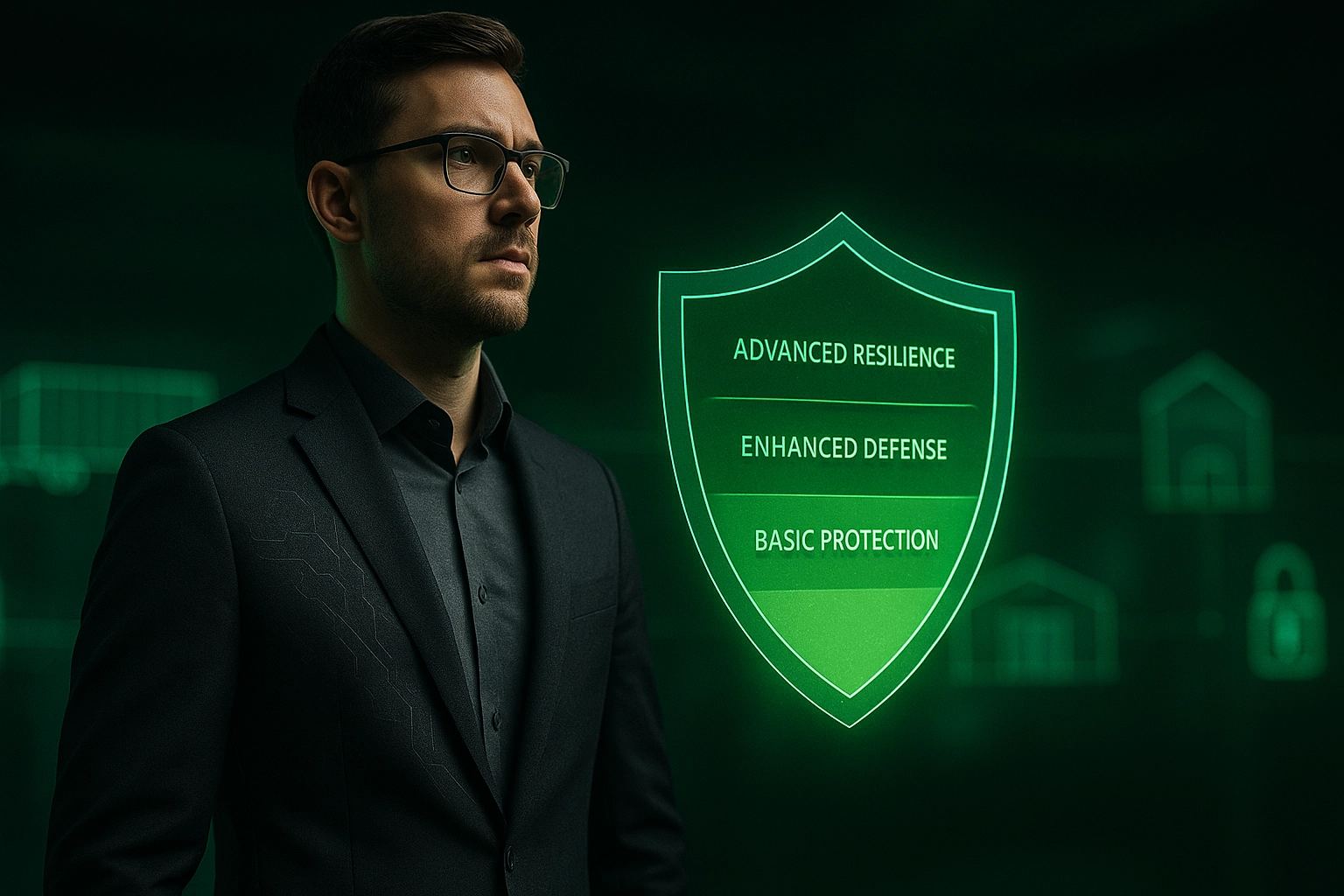Understanding the Scope 3 Data Collection Methodology under the CSRD

The Corporate Sustainability Reporting Directive (CSRD) is radically transforming the landscape of non-financial reporting in Europe, imposing stricter third-party governance in terms of sustainability. As part of the European Green Deal, this directive is a key pillar of the EU’s strategy to channel financial flows toward a more sustainable economy. Although its rollout is currently being questioned by the Omnibus Law, large companies remain subject to the initial timeline.
One of the major challenges lies in assessing and managing Scope 3, which covers all indirect emissions generated by third parties throughout the value chain. According to Thomson Reuters, these emissions are on average 11 times greater than a company’s direct emissions and represent more than 70% of its total carbon footprint.
In this context, implementing a collaborative assessment methodology is essential not only to ensure regulatory compliance but also to strengthen organizational operational resilience. This approach significantly reduces the “supplier fatigue” effect while ensuring reliable and comprehensive data collection.
This article explores effective large-scale collection strategies for Scope 3, leveraging the principles of TPGRC (Third Party Governance & Risk Compliance) and expertise developed from managing over 450,000 third parties. We will see how proven solutions, including those certified ISO 27001/27701, can support companies in the public, construction, industrial, and distribution sectors in their transition toward more mature third-party governance aligned with CSRD requirements.
Specifics of Scope 3 under the CSRD
The CSRD requires companies to thoroughly assess indirect emissions across their entire value chain. Scope 3, which encompasses these emissions, accounts for on average over 70% of a company’s total carbon footprint. This significant share underscores the critical importance of effective third-party governance for meeting operational resilience goals and the EU’s decarbonization targets. Without rigorous management of indirect emissions, corporate carbon reduction strategies remain largely incomplete.
To meet these challenges, companies must adopt a participatory methodology with their third-party partners, relying on proven technological solutions for data collection and analysis.
Main Categories of Scope 3
Scope 3 is divided into two major categories:
- Upstream emissions: including raw material extraction and production, goods transportation, and employee travel.
- Downstream emissions: including product use, transportation, and end-of-life.
Data Collection Challenges and Opportunities
Collecting Scope 3 data presents major challenges, notably due to complex value chains and data quality issues.
However, it also offers unique opportunities:
- Supply chain optimization: analyzing Scope 3 data highlights high-emission hotspots and helps streamline processes.
- Collaborative innovation: working with third parties can drive innovation and strengthen operational resilience.
To overcome these challenges, companies must adopt a participatory methodology with their third parties, relying on proven technological solutions for data collection and analysis.
Scope 3 Data Collection Methodology
Collecting Scope 3 data requires a structured and coordinated approach with third-party partners. Unlike traditional audit-based approaches, collaborative assessment helps significantly reduce “supplier fatigue” while ensuring high-quality data. According to the GHG Protocol, this methodology requires “broader engagement across the reporting company as well as with suppliers and external partners” to be truly effective.
Key Steps in the Methodology
- Define the assessment scope:
- Identify relevant Scope 3 categories for your business
- Prioritize third parties based on potential impact
- Map the value chain in detail
- Engage third parties:
- Initiate constructive dialogue with suppliers
- Explain the purpose and mutual benefits
- Offer secure data-sharing mechanisms
- Select data collection methods:
- Spend-based method: using financial data to estimate emissions
- Activity-based method: relying on specific measurable data
- Hybrid approach: combining both depending on data availability
- Collect and standardize data:
- Deploy proven technology solutions to automate collection
- Harmonize data formats between partners
- Integrate with existing management systems (ERP, lab systems, etc.)
- AI-assisted document analysis:
- Use artificial intelligence to process supplier documents
- Automatically extract relevant information
- Validate sector-specific certifications (e.g., ICPE, REACH)
- Verify and validate data:
- Implement rigorous quality control processes
- Identify and correct anomalies or inconsistencies
- Document assumptions and estimates used
- Consolidate and analyze results:
- Aggregate data to get a full picture
- Identify key Scope 3 emission contributors
- Use visualization tools to aid data interpretation
Want to optimize your decarbonization strategy and simplify supplier data collection?
Discover how Aprovall can help you measure your Scope 3 carbon footprint and track supplier progress.
Collection Challenges and Potential Solutions
Scope 3 data collection poses significant challenges for organizations aiming to strengthen operational resilience. According to the MIT Sustainable Supply Chain Lab, main obstacles include limited data availability, value chain complexity, and lack of standardized methodologies for reporting indirect emissions. These challenges are particularly acute in the retail sector, where complex omnichannel international supply chains multiply data sources.
To address these challenges, personalized support for third parties is essential. Workflows validated by 85% of auditors create a structured framework for data collection, significantly reducing supplier administrative burdens. This collaborative approach boosts partner engagement and improves data quality.
Technology and Innovation to Improve Collection
Integrating proven technological solutions is revolutionizing Scope 3 data collection. Key advances include:
- AI-assisted document analysis: Artificial intelligence extracts and analyzes relevant information from third-party documents, cutting processing time and improving accuracy. Information system integration further streamlines collection by automating data exchanges between platforms.
- Real-time monitoring: Continuous monitoring systems with contextual alerts identify anomalies quickly and allow data collection strategies to be adjusted accordingly.
- Remote sensing and satellite imagery: As NetZero Events notes, these technologies “provide accurate, real-time data on emissions across the entire value chain”, particularly useful in the public sector for GDPR compliance and public procurement oversight.
Regulatory Compliance Implications
Implementing an effective Scope 3 data collection methodology is not just about operational continuity—it’s a cornerstone for compliance with CSRD requirements. According to an Anthesis Group analysis, the new regulations “radically transform organizational sustainability reporting by requiring annual emissions disclosure” across the value chain.
This increased transparency is essential for mapping an organization’s trajectory toward carbon neutrality—the ultimate target of the EU Green Deal by 2050—which requires full control over both direct and indirect emissions.
A participatory third-party governance approach offers significant strategic benefits beyond compliance, as Greenomy highlights. It enables identification of regulatory synergies between frameworks like CSRD and the Duty of Vigilance, or DORA and NIS 2. This integrated view significantly reduces administrative burdens for third parties while ensuring more robust compliance.
In the public sector, for example, adopting a TPGRC approach allows local authorities to meet both CSRD requirements and public procurement obligations. This mutualization of compliance efforts generates substantial economies of scale while increasing transparency.
The shift from TPRM to TPGRC marks a major evolution in how organizations approach regulatory compliance. It places tailored educational support for third parties at the heart of strategy, enabling faster and more effective adoption of new requirements.
In short, a well-structured Scope 3 collection methodology is not just a compliance tool—it’s a strategic lever to boost operational resilience and adaptability to future regulatory changes.
Ready to transform your third-party governance approach for CSRD compliance?
Aprovall supports you in implementing an effective collaborative methodology for Scope 3 data collection, offering proven and certified solutions.
These articles might interest you
-
 13 April 2025Automated Financial Scoring: Optimizing Third-Party AssessmentSolutionsIn today’s world of interconnected supply chains, businesses can no longer afford to manage their supplier relationships blindly. A partner’s financial health can quickly become a critical risk factor. This is precisely the view of procurement leaders, who rank the risk of third-party financial failure as their number one concern, according to the AgileBuyer study. […]
13 April 2025Automated Financial Scoring: Optimizing Third-Party AssessmentSolutionsIn today’s world of interconnected supply chains, businesses can no longer afford to manage their supplier relationships blindly. A partner’s financial health can quickly become a critical risk factor. This is precisely the view of procurement leaders, who rank the risk of third-party financial failure as their number one concern, according to the AgileBuyer study. […]Read more
-
 11 February 2025NIS 2 Directive and Critical Third Parties: A Must-Read Guide for CompaniesSolutionsIdentifying and evaluating critical third parties is becoming a key challenge with the NIS 2 Directive, which is reshaping strategic partner governance across Europe. This regulatory shift, affecting approximately 300,000 institutions, redefines collaborative evaluation requirements for third parties in critical sectors such as construction, industry, retail, and the public sector. At the heart of this transformation […]
11 February 2025NIS 2 Directive and Critical Third Parties: A Must-Read Guide for CompaniesSolutionsIdentifying and evaluating critical third parties is becoming a key challenge with the NIS 2 Directive, which is reshaping strategic partner governance across Europe. This regulatory shift, affecting approximately 300,000 institutions, redefines collaborative evaluation requirements for third parties in critical sectors such as construction, industry, retail, and the public sector. At the heart of this transformation […]Read more
-
 17 March 2025Understanding Third-Party Cybersecurity Maturity: Keys to Effective AssessmentSolutionsThird-party governance has become a major strategic issue in an economic context marked by the growing interdependence between companies and their external partners. According to Gartner, 45% of cyberattacks in 2025 will originate from third parties, highlighting the urgency of a structured evaluation approach. Operational resilience against these threats now requires a shift from simple […]
17 March 2025Understanding Third-Party Cybersecurity Maturity: Keys to Effective AssessmentSolutionsThird-party governance has become a major strategic issue in an economic context marked by the growing interdependence between companies and their external partners. According to Gartner, 45% of cyberattacks in 2025 will originate from third parties, highlighting the urgency of a structured evaluation approach. Operational resilience against these threats now requires a shift from simple […]Read more
-
 19 March 2025Digital Transformation and Third-Party Governance: A New Era for Risk ManagementSolutionsDigital transformation is profoundly redefining the way organizations manage their relationships with third-party partners. In this rapidly evolving context, third-party governance is taking on a crucial strategic role, moving from simple document collection to collaborative compliance assessment. This shift is part of a broader movement toward Third Party Governance and Risk & Compliance (TPGRC), which […]
19 March 2025Digital Transformation and Third-Party Governance: A New Era for Risk ManagementSolutionsDigital transformation is profoundly redefining the way organizations manage their relationships with third-party partners. In this rapidly evolving context, third-party governance is taking on a crucial strategic role, moving from simple document collection to collaborative compliance assessment. This shift is part of a broader movement toward Third Party Governance and Risk & Compliance (TPGRC), which […]Read more
